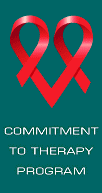
Human immunodeficiency virus (HIV) attacks the body's immune system and weakens it, resulting in chronic, progressive illness. The advanced stage of the illness is called the acquired immunodeficiency syndrome, or AIDS. HIV makes infected individuals vulnerable to other infections and cancers that would not ordinarily be a threat. It is these "opportunistic diseases" that become fatal.
HIV is spread through the exchange of infected body fluids: blood, semen, vaginal fluids and breast milk. If HIV-infected blood is present in saliva, there may be a risk of transmission. It can also be transmitted through contaminated blood or contaminated blood products, such as through a blood transfusion or organ donation.
HIV is not transmitted through everyday social contact, air, food or water. For instance, shaking hands, touching and swimming are safe. Furthermore, no risk of infection comes from sharing transportation (e.g., aeroplane, cruise ship, bus, train, etc.) with people living with HIV/AIDS.
HIV/AIDS occurs worldwide. The Joint United Nations Programme on HIV/AIDS (UNAIDS) estimates that by the close of 1999, 34.3 million adults and children were living with HIV/AIDS around the globe.
The disease appears on every inhabited continent. Some sobering figures supplied by UNAIDS demonstrate, in part, the global reach of this disease. By the close of 1999:
900,000 adults and children were living with HIV/AIDS in North America, 1.3 million in Latin America, and 5.6 million in South and South-East Asia.
Sub-Saharan Africa has the severest epidemics with 24.5 million people living with HIV/AIDS cases; the rate of HIV infection among 15- to 49-year-olds has reached or exceeded 10% in 16 countries.
In Canada, it is estimated that nearly 20,000 AIDS cases occurred between the first reporting of AIDS in 1982 and the end of 1999, and that by the end of 1999 between 45,000 and 53,000 Canadians were living with HIV.
Infection with HIV often first appears as a flu-like illness that eventually passes. Although the infection progresses relentlessly, an infected person may not have symptoms for 10 years or more. However, throughout this symptom-free period, an infected person can transmit the virus to sexual partners or needle sharers.
Following the initial flu-like period, many people living with HIV may periodically experience fever, weight loss, loss of appetite, extreme fatigue. The onset of opportunistic infections and cancers characterizes the advance to AIDS, the last stage of HIV infection. During this period, many people develop unusual types of pneumonia such as pneumocystis carinii, skin cancers such as Kaposi's sarcoma or other types of cancer, which lead to death.
The HIV-antibody blood test will tell if you are infected or not. However, receiving a negative result means only that no antibodies to HIV were found in your blood at the time of testing. Most positive HIV results will show up within three months of a person being infected, but HIV antibodies can take as long as six months to appear. Therefore, a second test may be required to confirm a negative result.
Several drugs have been developed that can slow the progression of HIV disease, but there is no cure for HIV/AIDS at this time. These drugs have many side effects, are difficult to take and are costly.

Canadian AIDS Society
Canadian Public Health Association
Health Canada
Canadian HIV/AIDS Legal Network
AIDS & First Nations Peoples
AIDS Committee of Newfoundland & Labrador
The BC Centre for Excellence in HIV/AIDS">
AIDS Committee of Toronto
AIDS New Brunswick
AIDS PEI
AIDS Coalition of Nova Scotia



You can
 if you'd like.
if you'd like.